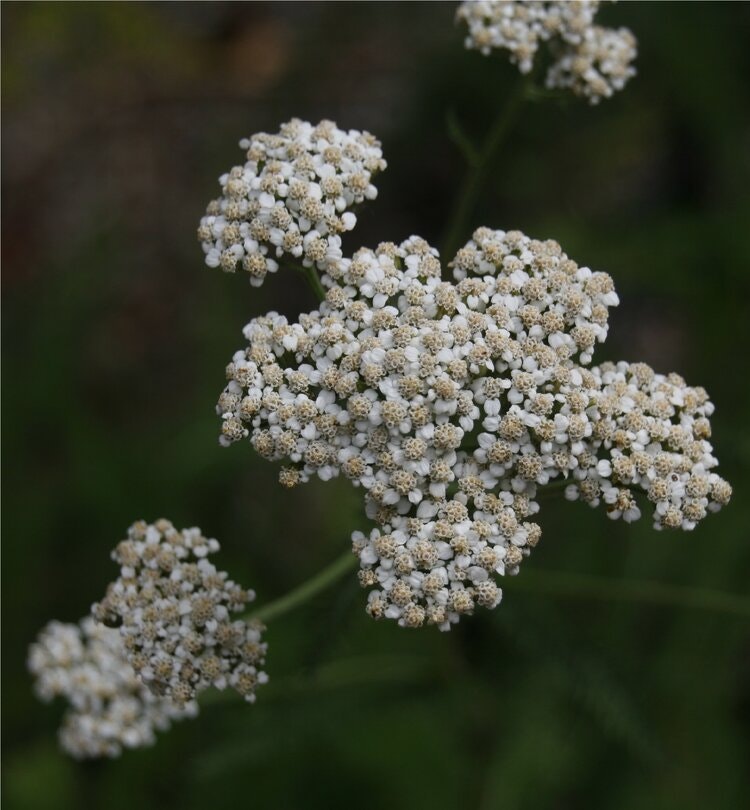COMMON YARROW
(Achillea millefolium)
Other common names: Milfoil, Yarrow, Gordaldo, Nosebleed Plant, Old Man's Pepper, Devil's Nettle, Sanguinary, Milfoil, Soldier's Woundwort, Thousand-Leaf, Thousand-Seal

Kingdom: Plantae – Plants
Subkingdom: Tracheobionta – Vascular plants
Superdivision: Spermatophyta – Seed plants
Division: Magnoliophyta – Flowering plants
Class: Magnoliopsida – Dicotyledons
Subclass: Asteridae
Order: Asterales
Family: Asteraceae – Aster family
Genus: Achillea L. – yarrow
Species: Achillea millefolium L. – common yarrow
Common Yarrow or milfoil, a member of the aster or composite family (Asteraceae), has aromatic rounded to flat-topped clusters of small white flowers that often have slight pink or yellow shades that usually bloom from April to October. This attractive, hardy perennial can reach about 3 feet in height, displaying soft, feathery-cut leaves giving the plant a fern-like appearance. The name milfoil comes from its Latin name “millefolium” meaning “a thousand leaves”.
Cultivated varieties of yarrow with white, yellow, gold, pink, or red flowers brighten many of our nation’s forests and grasslands, as well become a staple in many home gardens throughout the world. Yarrow attracts butterflies, bees and other insects, making it a nice addition to a pollinator garden. However, this species can become weedy since it spreads readily and tolerates disturbance.
Yarrow is found throughout North America from the coast to alpine zone but has Eurasian origins. Due to the easy spreading of its rhizomes and ability to form dense matter, Yarrow can be a great addition to slopes and hillsides to help reduce soil erosion. It grows favorably in USDA zones 1-11 and most situations except deep shade and in areas containing standing water.
Yarrow may be best known for its medicinal qualities. The genus Achillea was named after Achilles, who used plant extracts to treat soldiers’ wounds in the battle of Troy. Numerous tribes in North America also used yarrow for a variety of ailments. The crushed plant was applied to wounds and burns. The dried leaves were used as a tea to soothe colds, fever, and headache. Present day uses are centered more on external injuries. Known as a styptic to stop bleeding, an astringent and anti-inflammatory to sooth, and antiseptic to cleanse, it is no wonder it is a staple of the herb garden.
